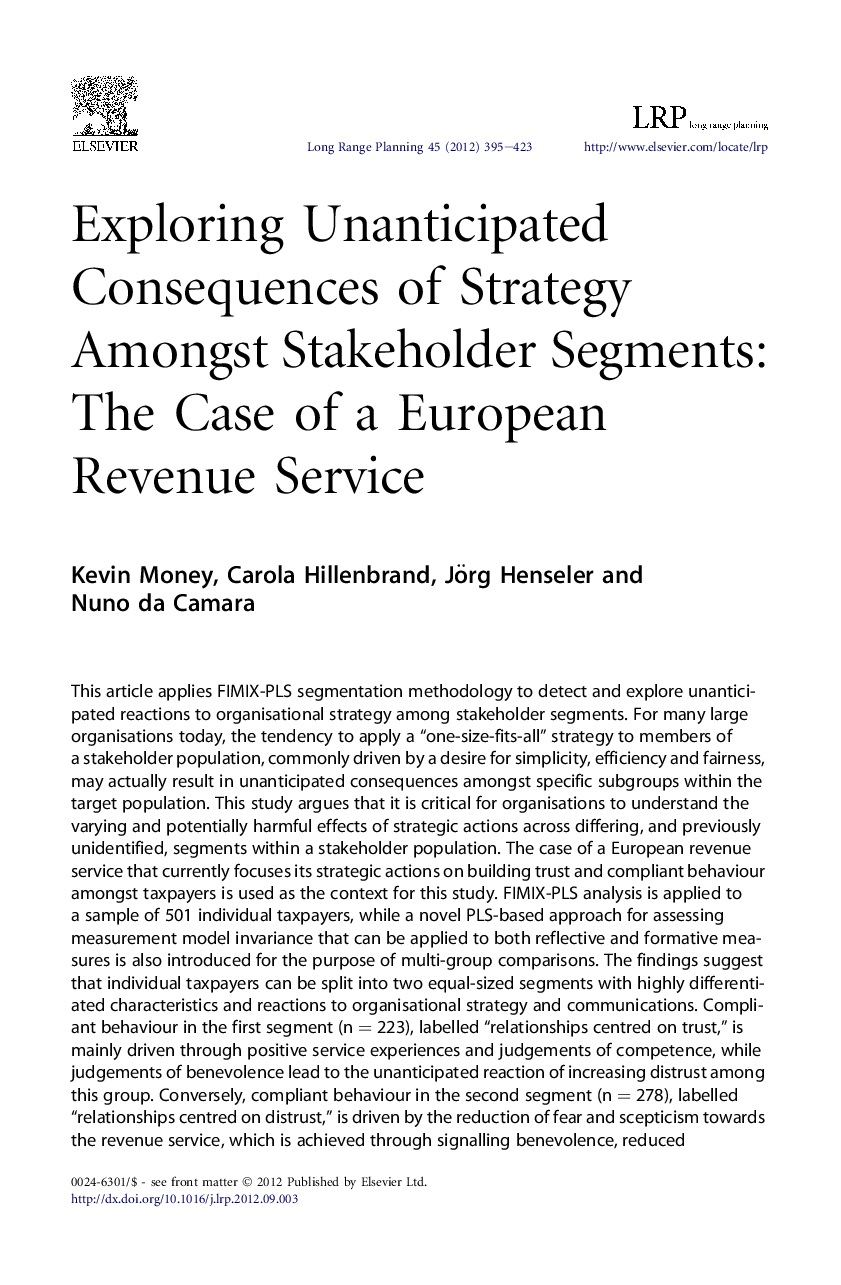| کد مقاله | کد نشریه | سال انتشار | مقاله انگلیسی | نسخه تمام متن |
|---|---|---|---|---|
| 1021335 | 1482911 | 2012 | 29 صفحه PDF | دانلود رایگان |

This article applies FIMIX-PLS segmentation methodology to detect and explore unanticipated reactions to organisational strategy among stakeholder segments. For many large organisations today, the tendency to apply a “one-size-fits-all” strategy to members of a stakeholder population, commonly driven by a desire for simplicity, efficiency and fairness, may actually result in unanticipated consequences amongst specific subgroups within the target population. This study argues that it is critical for organisations to understand the varying and potentially harmful effects of strategic actions across differing, and previously unidentified, segments within a stakeholder population. The case of a European revenue service that currently focuses its strategic actions on building trust and compliant behaviour amongst taxpayers is used as the context for this study. FIMIX-PLS analysis is applied to a sample of 501 individual taxpayers, while a novel PLS-based approach for assessing measurement model invariance that can be applied to both reflective and formative measures is also introduced for the purpose of multi-group comparisons. The findings suggest that individual taxpayers can be split into two equal-sized segments with highly differentiated characteristics and reactions to organisational strategy and communications. Compliant behaviour in the first segment (n = 223), labelled “relationships centred on trust,” is mainly driven through positive service experiences and judgements of competence, while judgements of benevolence lead to the unanticipated reaction of increasing distrust among this group. Conversely, compliant behaviour in the second segment (n = 278), labelled “relationships centred on distrust,” is driven by the reduction of fear and scepticism towards the revenue service, which is achieved through signalling benevolence, reduced enforcement and the lower incidence of negative stories. In this segment, the use of enforcement has the unanticipated and counterproductive effect of ultimately reducing compliant behaviour.
Journal: Long Range Planning - Volume 45, Issues 5–6, October–December 2012, Pages 395–423